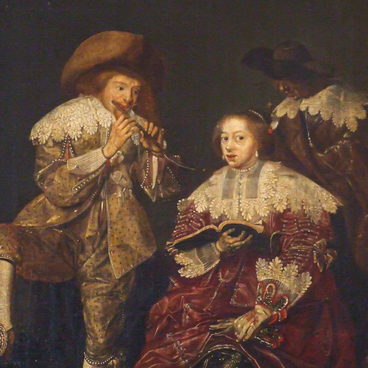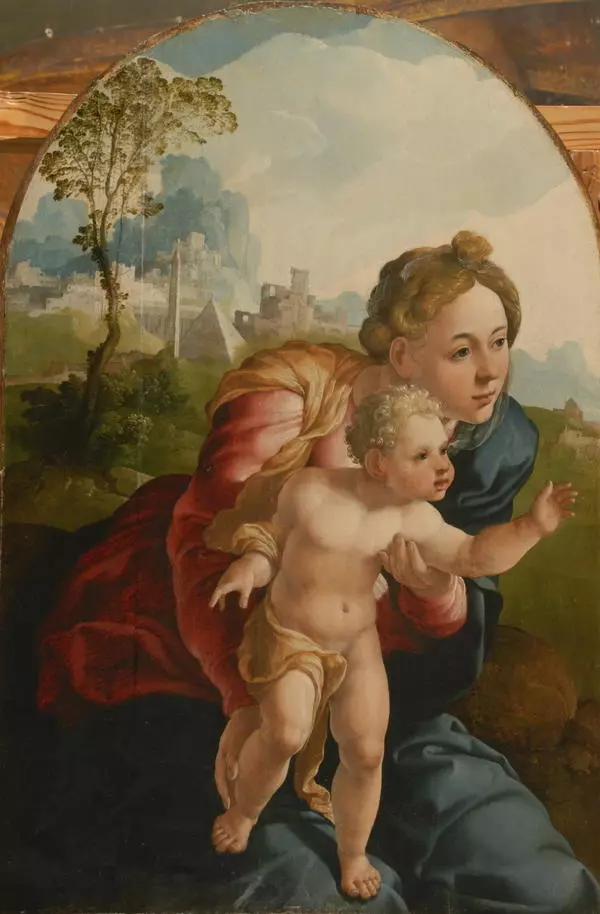Jan van Scorel was born in 1495 in the Dutch town of Schoorl, or Scorel. Having received a good education, he lived as a pilgrim, traveled and collected observations around the world for six years. Van Scorel was a true Renaissance man combining the talents of a humanist and a rhetorician, an engineer and a musician, an archaeologist and a poet. Jan van Scorel succeeded Raphael as the curator of the Pope’s antiquities collection at the Belvedere Palace, and later he became a Catholic priest. Van Scorel took up painting seriously after he turned 20 years old — the German artist Albrecht Dürer was one of his teachers.
The name of Jan van Scorel is associated with the Northern Renaissance along with the names of Hieronymus Bosch, Pieter Bruegel, Jan van Eyck, Marc Duval and William Shakespeare. The ideals of the Renaissance stimulated the development of Dutch, German and English art, and each of these national schools embraced its own revolution. The primary difference between the Northern Renaissance and Italian Renaissance art was the emphasis placed not on man, but on nature. New genres — flower and fruit still lifes, urban and rural landscapes — proliferated; the canons of religious painting were reconsidered.
In his painting “John the Baptist” Jan van Scorel demonstrates his love for details, the symbolism and grandeur of a great spiritual concept. In the Orthodox tradition, Saint John is traditionally called the “Prophet, Forerunner and Baptist of the Lord.” Jesus came to John to be baptized in the Jordan River. The baby John wears a “garment of camel’s hair” (the Gospel of Matthew) — he is going to wear this kind of clothes all his life. In his hands, the boy has a small baptism bowl.
The manner of painting is confident and bold. Transparent, clean and restrained colors create a feeling of solemnity and intimacy. There are some traces of Italian influence in van Scorel’s style, but like a true Dutch master, he peers intently at the world around him. There is a robin drinking water and a drake sailing on water — they are rendered with no less attention and love than the protagonist is. Baby John leans forward, and the bright sky and the background landscape set a clear and joyful mood.
The name of Jan van Scorel is associated with the Northern Renaissance along with the names of Hieronymus Bosch, Pieter Bruegel, Jan van Eyck, Marc Duval and William Shakespeare. The ideals of the Renaissance stimulated the development of Dutch, German and English art, and each of these national schools embraced its own revolution. The primary difference between the Northern Renaissance and Italian Renaissance art was the emphasis placed not on man, but on nature. New genres — flower and fruit still lifes, urban and rural landscapes — proliferated; the canons of religious painting were reconsidered.
In his painting “John the Baptist” Jan van Scorel demonstrates his love for details, the symbolism and grandeur of a great spiritual concept. In the Orthodox tradition, Saint John is traditionally called the “Prophet, Forerunner and Baptist of the Lord.” Jesus came to John to be baptized in the Jordan River. The baby John wears a “garment of camel’s hair” (the Gospel of Matthew) — he is going to wear this kind of clothes all his life. In his hands, the boy has a small baptism bowl.
The manner of painting is confident and bold. Transparent, clean and restrained colors create a feeling of solemnity and intimacy. There are some traces of Italian influence in van Scorel’s style, but like a true Dutch master, he peers intently at the world around him. There is a robin drinking water and a drake sailing on water — they are rendered with no less attention and love than the protagonist is. Baby John leans forward, and the bright sky and the background landscape set a clear and joyful mood.




